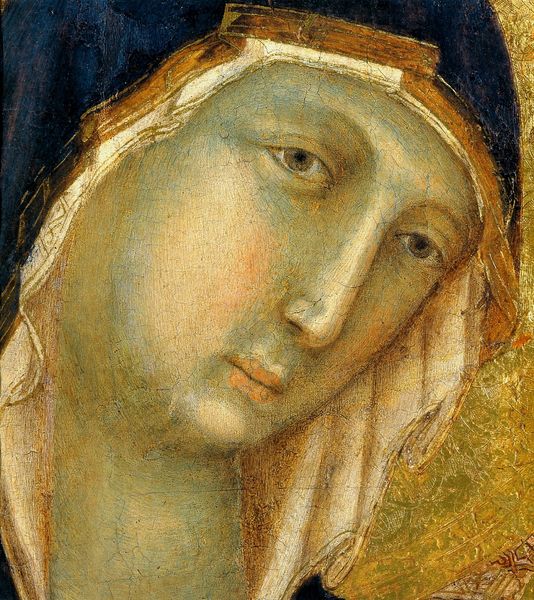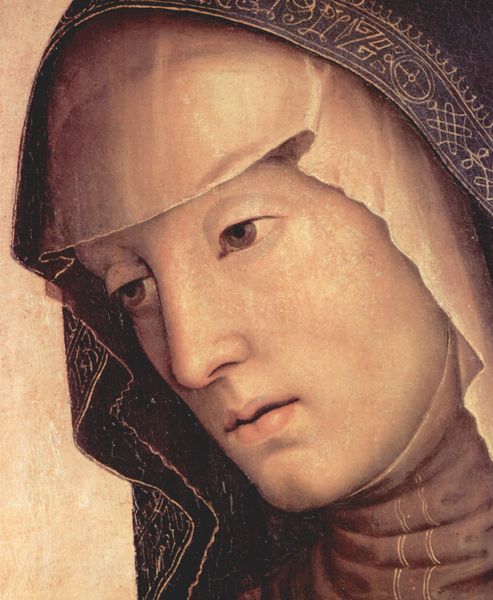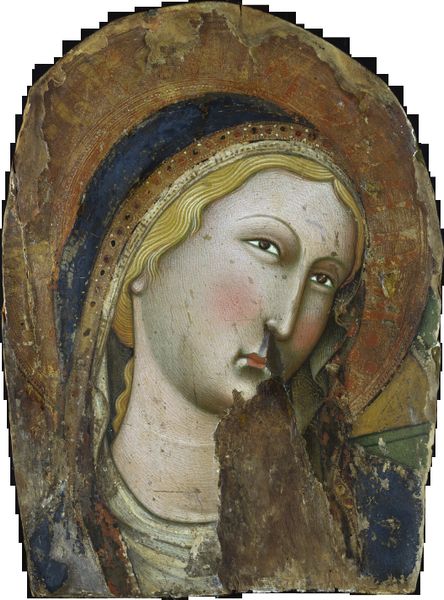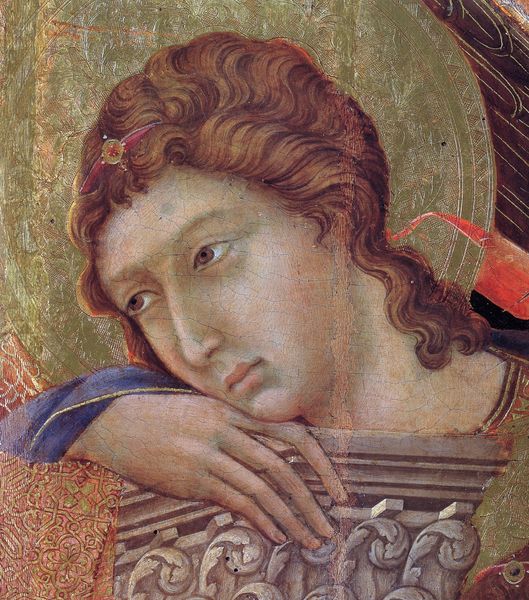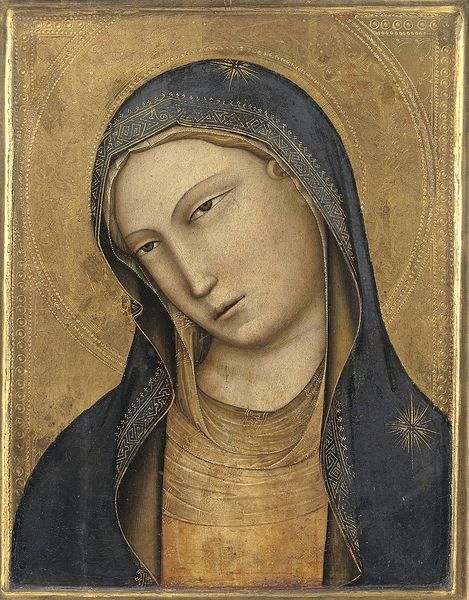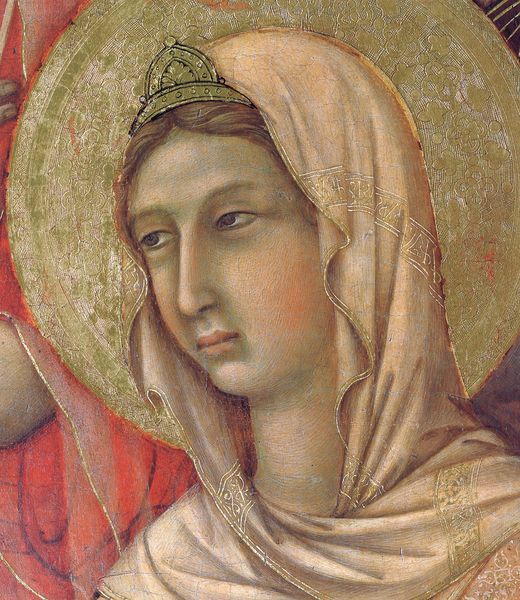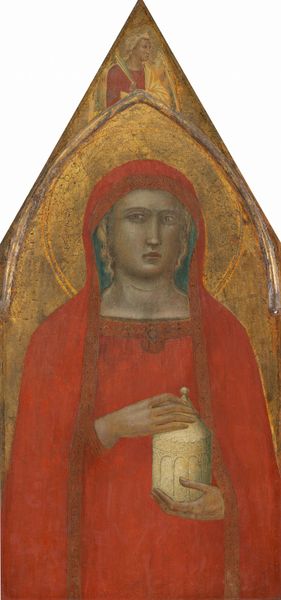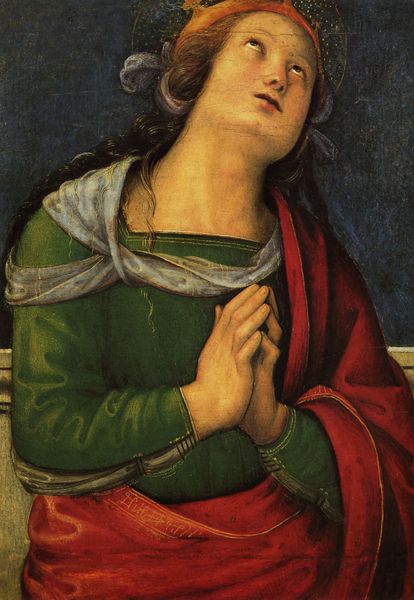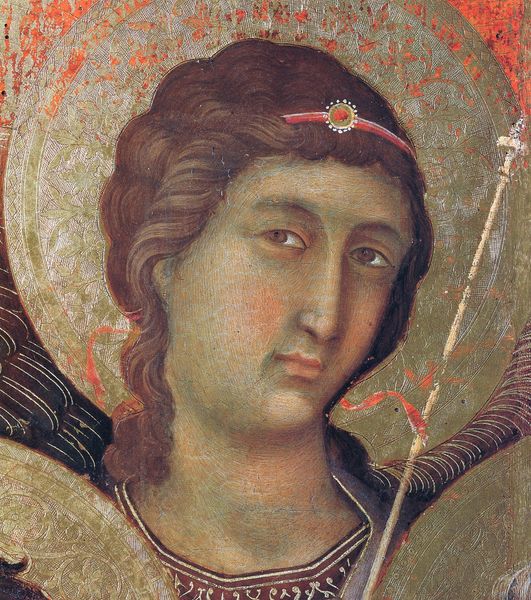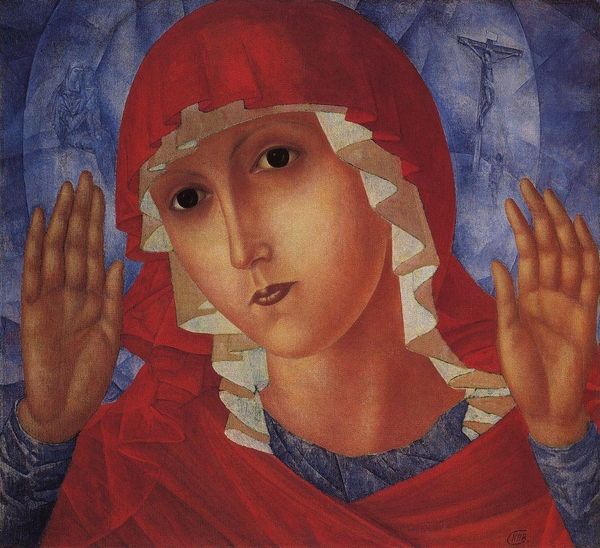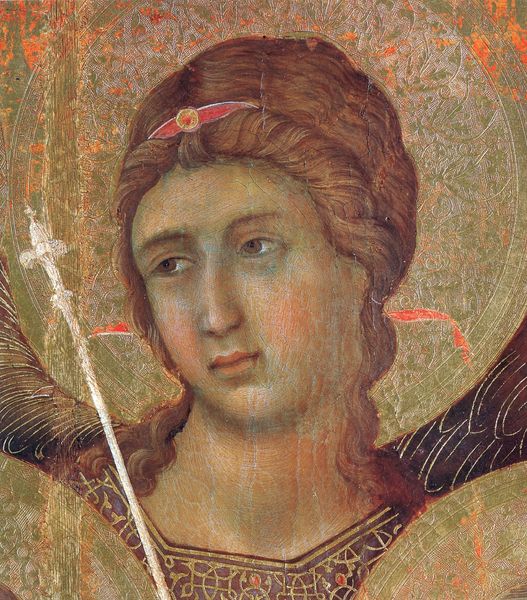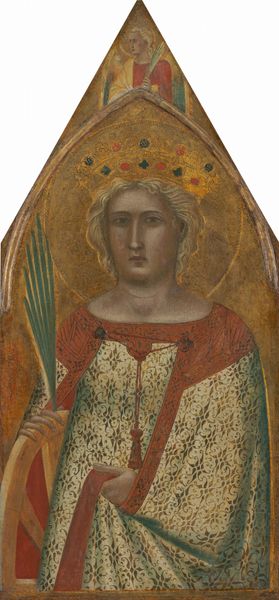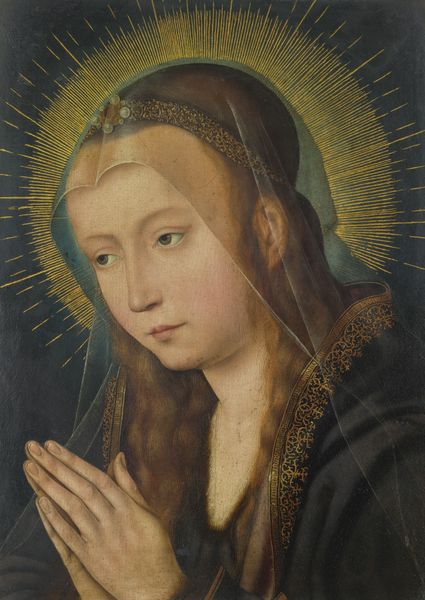
panel, tempera, painting
#
portrait
#
medieval
#
panel
#
tempera
#
painting
#
sienese-school
#
figuration
#
italian-renaissance
#
early-renaissance
Dimensions: 89 x 60 cm
Copyright: Public domain
Curator: This is the "Crevole Madonna" by Duccio, a tempera and gold on wood panel, dating back to around 1280. Editor: My first impression is one of serene melancholy. The pale skin, the downcast gaze—it’s a very internalized emotion. Curator: The interesting thing is to contextualize this melancholy. The Madonna figure has been employed through centuries and varied according to who uses the character. Is Duccio’s Madonna about feminine suffering under patriarchy or does it show the pain a mother might feel for her child when realizing their ultimate fate? It would be short-sighted to only look for answers in devotion, we also should explore these pieces in the terms of intersectional narratives of power, identity and even race in our day. Editor: I appreciate that interpretation. Yet, consider how the composition focuses our attention: the gentle curve of her neck, the delicate positioning of the hand against her face. There is also the symbolic weight of the gold background as divinity, but used here as surface, as a purely formal component. Can we find any clues when considering how such elements trigger an emotion in us? Curator: But the very choice of gold, traditionally reserved for sacred depictions, carries a specific cultural weight, marking her as both divine and, simultaneously, subject to societal expectations of idealized womanhood. Let us then delve into the philosophical and feminist theories concerning this artwork in that light. Editor: Granted, but the mastery is in the subtle gradation of color on her face, how he models her cheekbone with light. This evokes the emotional intensity we interpret! There’s a tangible presence, even within the conventions of the time. It has to start in the visible clues. Curator: Ultimately, viewing a piece such as this demands a sensitivity to historical narratives, but also to the enduring ways gendered and racialized ideals keep defining representation. It requires decolonizing art, and what we think is beauty or representation of divinity! Editor: Yes, but perhaps a work like this can be a starting point for recognizing both artistic skill, cultural significance and their ability to convey such poignant feeling regardless of where we are. It's fascinating how lines and colors put together centuries ago still deeply moves us.
Comments
No comments
Be the first to comment and join the conversation on the ultimate creative platform.
